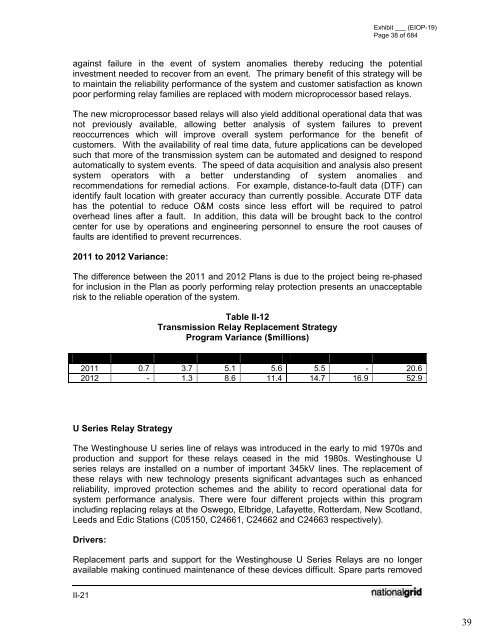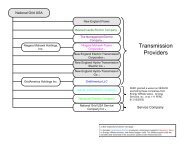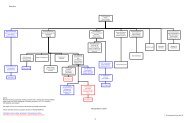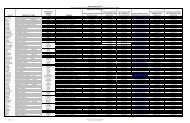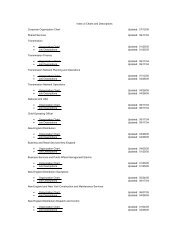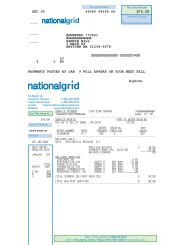January 2012 Capital Investment - National Grid
January 2012 Capital Investment - National Grid
January 2012 Capital Investment - National Grid
You also want an ePaper? Increase the reach of your titles
YUMPU automatically turns print PDFs into web optimized ePapers that Google loves.
Exhibit ___ (EIOP-19)Page 38 of 684against failure in the event of system anomalies thereby reducing the potentialinvestment needed to recover from an event. The primary benefit of this strategy will beto maintain the reliability performance of the system and customer satisfaction as knownpoor performing relay families are replaced with modern microprocessor based relays.The new microprocessor based relays will also yield additional operational data that wasnot previously available, allowing better analysis of system failures to preventreoccurrences which will improve overall system performance for the benefit ofcustomers. With the availability of real time data, future applications can be developedsuch that more of the transmission system can be automated and designed to respondautomatically to system events. The speed of data acquisition and analysis also presentsystem operators with a better understanding of system anomalies andrecommendations for remedial actions. For example, distance-to-fault data (DTF) canidentify fault location with greater accuracy than currently possible. Accurate DTF datahas the potential to reduce O&M costs since less effort will be required to patroloverhead lines after a fault. In addition, this data will be brought back to the controlcenter for use by operations and engineering personnel to ensure the root causes offaults are identified to prevent recurrences.2011 to <strong>2012</strong> Variance:The difference between the 2011 and <strong>2012</strong> Plans is due to the project being re-phasedfor inclusion in the Plan as poorly performing relay protection presents an unacceptablerisk to the reliable operation of the system.Table II-12Transmission Relay Replacement StrategyProgram Variance ($millions)CIP FY12 FY13 FY14 FY15 FY16 FY17 Total2011 0.7 3.7 5.1 5.6 5.5 - 20.6<strong>2012</strong> - 1.3 8.6 11.4 14.7 16.9 52.9U Series Relay StrategyThe Westinghouse U series line of relays was introduced in the early to mid 1970s andproduction and support for these relays ceased in the mid 1980s. Westinghouse Useries relays are installed on a number of important 345kV lines. The replacement ofthese relays with new technology presents significant advantages such as enhancedreliability, improved protection schemes and the ability to record operational data forsystem performance analysis. There were four different projects within this programincluding replacing relays at the Oswego, Elbridge, Lafayette, Rotterdam, New Scotland,Leeds and Edic Stations (C05150, C24661, C24662 and C24663 respectively).Drivers:Replacement parts and support for the Westinghouse U Series Relays are no longeravailable making continued maintenance of these devices difficult. Spare parts removedII-2139


